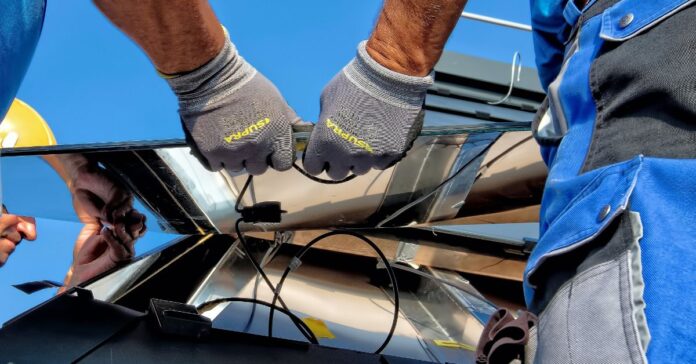They claim to be eco-friendly, but can solar panels be recycled? Actually, they can. Although their large scale usage is new, and they can least up to 25 years, their recycling process is super established. See how it happens.
Recycling Solar Panels
With the popularization of solar energy it is important that solar panels are disposed of properly.
The technology of photovoltaic solar panels is indispensable for our planet, for its generation of 100% clean electric energy through the direct conversion of sunlight.
As this technology becomes more popular around the world, the plates, although they last an average of 25 years, also need to be disposed of in an environmentally friendly way.
According to a 2016 survey by the International Renewable Energy Agency, IRENA, more than 78 million tons of photovoltaic equipment will be accumulated worldwide by 2050.
According to the survey, if recycled and fed back into the production chain, the recovered value of this equipment could exceed $15 billion.
Monocrystalline silicon panels, which in 2016 accounted for 51.4% of the recycling market, already have highly effective recycling processes with minimal environmental impact.
However, because they are long-life goods (at least 25 years), photovoltaic modules and their recycling are still an incipient market.
Solar panels recycling
As it is made basically from glass, metals and silicon, 95% of solar panel components can be recycled to create new solar energy panels or even other materials.
Recycled solar panels in Europe
Europe stands out as the leading market for solar panel recycling due to early adoption and wide consumer acceptance in the region.
The first grid-connected (On-Grid) photovoltaic systems, for example, were installed in Germany in the early 1990s.
The presence of various government measures to regulate the recycling process in countries such as Germany and the UK is expected to drive the market growth.
Technological advancements to increase the recycling rate will likely fuel demand for the market over the next eight years.
In Germany, for example, the company Geltz Umelt-\vTechnology has created a recycling plant for solar plates. The project is being sponsored by the European Union (EU). Geltz Umelt-\vTechnology is located in southern Germany and specializes in water treatment and precious metal recovery.
According to Fabian Geltz, managing director of Geltz, the plant is in the testing phase and uses a process created by the company and its partners that allows the separation and recovery of several materials used in the manufacturing of the plates, such as aluminum, glass, silver, copper, tin, and silicon.
After this plate recycling barrier is overcome, the next challenge, according to Geltz, is to recycle each of these separated valuable materials to the highest possible degree of purity.
The toxic gases released by the material separation process created by Geltz are neutralized directly in the plant, nullifying the release of pollutants.
When the recycling process reaches full operation at the plant, the company estimates that this pilot plant will be able to process up to 50,000 modules per year, recovering more than 95% of the recyclable materials.
Countries such as the USA, China, Japan, and India are also rapidly developing markets for solar panel recycling.
How are solar panels recycled?
An American-based solar equipment distributo, CED Greentech has described the four steps involved in the process of recycling solar panels made of silicon:
The aluminum frame is removed from the panel. It can be considered 100% reusable;
The glass is separated as it follows along a conveyor belt. It can be considered 95% reusable;
The recycled panel goes through a type of thermal processing, which brings the frame up to 932 degrees Fahrenheit. This part of the process allows for the evaporation of small plastic components not yet removed from the panel. This also allows the cells to be separated more easily;
Silicon wafers are stripped before being melted down into reusable boards. It can be considered 85% reusable.
When do solar panels need to be recycled?
Solar panels have a useful life of about 25 years.
Considering the phenomenon of planned obsolescence of most technology in the modern era, this is not too bad.
However, as solar energy is becoming increasingly popular, technological advances will result in a greater degree of true obsolescence among “older” panels, which will increase the number of panels that need to be replaced, discarded, or recycled.
Why can solar panels be recycled? Should they?
The main reason for recycling solar panels is to decrease the amount of aluminum, glass, and other valuable materials in landfills.
Also, in order to make new panels, the raw materials need to be reused and repurposed. Therefore, recycling solar panels turns an already renewable resource into a much more sustainable one.
Solar panels lifespan
To get straight to the point, the useful life of a solar panel is 25 to 30 years.
However, some research shows that the durability of a solar panel can exceed 40 years. In other words, it is more than enough time for the user to recover the investment made and enjoy the benefits of solar energy.


